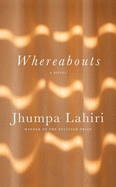
| Publisher: | Knopf | |
| Genre: | Women, World Literature, Italy, Literary, Fiction | |
| ISBN: | 9780593318317 | |
| Pub Date: | April 2021 | |
| Price: | $24 |
| Starred | Fiction |
by Jhumpa Lahiri
Jhumpa Lahiri's beautifully refined, slender third novel, Whereabouts, immerses readers in the captivating orbit of an unnamed narrator as she wanders alone through the Italian city she calls home. Consisting of short, elegant vignettes, there is a hypnotic quality and melancholy hum to the flow of the character's days as she walks to her job in academia, eats at her favorite trattoria, swims at the public pool, bumps into an ex-lover at the bookstore and pays guilt-inducing visits to her mother.
The author's fascination with identity, alienation and belonging are recurring themes in her fiction (The Lowland; The Namesake; the Pulitzer-winning collection Interpreter of Maladies), and Whereabouts is no exception. Lahiri's graceful writing explores the protagonist's voyeuristic tendencies, her craving for solitude and her wistfulness over not attaining conventional standards of success. Along the way readers experience a vivid sense of her days and the people she encounters, whether strangers, friends or shopkeepers. She ruminates over a lonesome childhood and reveals her attraction to a married man with whom she shares a "chaste, fleeting bond."
Whereabouts gently concludes with a new beginning for the middle-aged narrator, a fresh chapter yet to be written and a farewell to her "urban cocoon." Originally published to critical acclaim in Italian, under the title Dove mi trovo (Where I Find Myself) and translated into English by Lahiri herself, the scenes in Whereabouts weave together to form a profoundly intimate story of the delicate interplay between one's exposed outer self, the person one reveals to others, and the shaded complexity of one's inner life. --Shahina Piyarali, reviewer
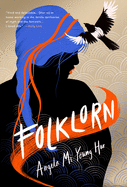
| Publisher: | Erewhon | |
| Genre: | Magical Realism, Fairy Tales, Folk Tales, Legends & Mythology, Asian American, Fiction | |
| ISBN: | 9781645660163 | |
| Pub Date: | April 2021 | |
| Price: | $26.95 |
| Fiction |
by Angela Mi Young Hur
Korean American author Angela Mi Young Hur (The Queens of K-Town) takes readers on a soul-searching journey across the globe in Folklorn, a genre-blending novel that intricately mixes family drama and folklore.
Particle physicist and second-generation Korean American Elsa Park studies neutrinos at Amundsen Scott South Pole Station in Antarctica, a "geeky Shangri-la on planet Hoth" a world away from her catatonic mother, angry father and schizophrenic brother. As she prepares to return to Stockholm, her invisible friend from childhood appears to her, reminding her that her mother believed the women of their family are cursed to remember and repeat the lives of their female ancestors as described in folktales.
Elsa worries she may have inherited her mother's mental health problems and questions the meaning behind her mother's stories. In Stockholm, sexy Korean Swedish professor Oskar answers her folklore questions and tries to work his way into her tightly guarded heart. When bad news draws her home to California, she must come to terms with her family and solve the mystery of whether she has a living sister.
Hur intertwines Korean folktales about sacrificed girls with meditations on science, generational trauma, the immigrant experience and life as a person of color in the U.S. Elsa is a sometimes frustrating, wholly human heroine, her quest impeded by emotional baggage and the increasing difficulty of compartmentalization. Her struggle to find answers feels realistically challenging and satisfying. Infused with logic, wonder and healing, Folklorn offers a multifaceted take on family histories. --Jaclyn Fulwood, blogger at Infinite Reads
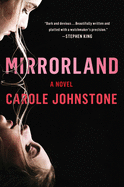
| Publisher: | Scribner | |
| Genre: | Psychological, Family Life, Mystery & Detective, Thrillers, Fiction, Women Sleuths, Siblings | |
| ISBN: | 9781982136352 | |
| Pub Date: | April 2021 | |
| Price: | $27 |
| Mystery & Thriller |
by Carole Johnstone
Carole Johnstone melds intricate family dynamics into a gripping mystery with the undercurrent of a gothic novel in Mirrorland. A childhood filled with trauma, abuse and dark secrets created a strong bond between twin sisters Catriona "Cat" Morgan and Ellice "El" MacAuley. To escape, the girls created an imaginary world they called Mirrorland, filled with pirates, witches and clowns. But the stress of the past also led to their estrangement as adults.
The sisters' relationship drove Cat to move to California 12 years ago, where she established a career as a freelance writer, while El remained in Edinburgh, where she married Ross MacAuley, a clinical psychologist. Now Cat returns to Scotland because El hasn't returned from one of her regular solo sailings on the Firth of Forth. Creepiness quickly settles over Mirrorland as El and Ross have bought a house Cat has tried to forget. Even stranger, the couple has been restoring the residence and furnishings to resemble the way it used to be. "The house is both too quiet and too loud," thinks Cat. While the police and Ross want to give up the search, Cat believes that Ellice is still alive, which elevates the suspense.
The parallels between reality and the sisters' childhood world add heft to the plot; Cat finds the house even more foreboding as her memories threaten to overwhelm her. Johnstone keeps Mirrorland character-driven as she explores the complicated connection between the sisters and Ross, whom they have known since they were kids, all of their personalities forged by trauma. --Oline H. Cogdill, freelance reviewer
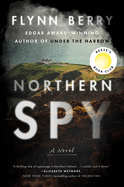
| Publisher: | Viking | |
| Genre: | Psychological, Women, Literary, Thrillers, Fiction | |
| ISBN: | 9780735224995 | |
| Pub Date: | April 2021 | |
| Price: | $26 |
| Mystery & Thriller |
by Flynn Berry
Slicing apples for a pie, Tessa Ryan tenses, realizing the fruit's variety--Northern Spy--has a double meaning. Apple or counterterrorist? In Flynn Berry's suspenseful third novel (following Under the Harrow and A Double Life), Tessa and her family live an outwardly normal life in Northern Ireland, knowing violence can erupt at any moment, and people are not always who they seem to be.
Sisters Tessa and Marian have always been close. Born near Belfast as "the Troubles" were ending, they live a bus ride apart, Tessa with her infant in a bucolic coastal village and Marian in the city. Years after the Good Friday Agreement declaring peace, Northern Ireland is still divided: "We were living in a tinderbox," Tessa says. They consider themselves Irish, not British, but are pointedly apolitical. So, when TV footage shows Marian in an IRA robbery, Tessa is incredulous. Was she kidnapped? Is she IRA? Tessa's first-person point of view heightens the sense of anxiety as she grapples with questions, then truth, then choices. She joins shop customers scrambling at the sound of a car accident that sounds like a bomb; eventually, she learns of a co-worker's double life.
A BBC television journalist, she is well aware of politics, but her priority is baby Finn. Marian pressures Tessa to take an active role, and Tessa wonders if she is "standing in the way of the rebellion." Pulled deeper into the conflict, the sisters remain loyal to each other, as the juxtaposition of deadly strife and ordinary life propels this tense, simmering thriller to its unexpected conclusion. --Cheryl McKeon, Book House of Stuyvesant Plaza, Albany, N.Y.
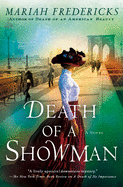
| Publisher: | Minotaur Books | |
| Genre: | Mystery & Detective, General, Fiction, Historical, Women Sleuths | |
| ISBN: | 9781250210906 | |
| Pub Date: | April 2021 | |
| Price: | $26.99 |
| Mystery & Thriller |
by Mariah Fredericks
She might be "just" a maid, but Jane Prescott is often the smartest person in the room. Death of a Showman, the lively and arresting fourth book in Mariah Fredericks's Gilded Age series, takes Jane to the tumultuous set of a Broadway play in 1914, where her employer, the wealthy Mrs. Louise Tyler, has found an exciting new calling as a patron. Complicating matters, the show is written and directed by Jane's former dancing partner, Leo Hirschfeld, who recently married one of the musical's chorus girls. Jane is less than thrilled to have Leo's wife on set--as are the other stars, who view Mrs. Hirschfeld as a threat. When the play's abusive and hot-tempered producer, Sidney Warburton, is murdered, everyone in the cast becomes a suspect, morphing the story into a fast-paced whodunit that puts Jane at the center of the investigation--and of at least one love triangle.
As the book's amiable narrator, Jane is clever, thoughtful and surprisingly streetwise. She is also obsessively dedicated to her work--in one amusing scene, she admonishes another servant for incorrectly arranging Mrs. Tyler's shoes. This devotion and absolute loyalty to the Tyler family make her even more charming. But as she watches Mrs. Tyler find purpose through her position at the theater, Jane realizes she also harbors a deep desire to do something more than tend to Mrs. Tyler's wardrobe. Her curiosity fuels her scrutiny of Warburton's murder, as well as her understandable wish to be loved and remembered when she's gone. --Angela Lutz, freelance reviewer
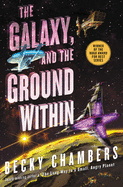
| Publisher: | Harper Voyager | |
| Genre: | Space Opera, General, Alien Contact, Fiction, Science Fiction, LGBTQ+ | |
| ISBN: | 9780062936035 | |
| Pub Date: | April 2021 | |
| Price: | $27.99 |
| Starred | Science Fiction & Fantasy |
by Becky Chambers
Becky Chambers (Record of a Spaceborn Few) plumbs new emotional and philosophical depths in The Galaxy, and the Ground Below, the illuminating and uplifting fourth installment in her Wayfarers series.
Following the accidental destruction of communication satellites, five aliens are marooned together on the layover planet of Gora. Ooulu and her son Tupo of the Laru species, with limbs and necks "like animated noodles, their stubby torsos thick and bumbling," run the multispecies establishment Five-Hop One-Stop, where travelers make brief stopovers. Roveg, an insect-like Quelin, is jovial, enjoys art and is an exile from his home planet for spreading progressive ideologies. Pei, an Aeluon whose species communicates through color, is a ship captain who delivers supplies behind enemy lines in her species' ongoing war. Speaker, a diminutive Akarak that leaves her shuttle only in the protection of a mech suit, is a mystery to all but her own kind. From this forced proximity comes an unusual opportunity, and slowly the four species begin to bond, sharing food and music as well as opening up to each other's ethical dilemmas and personal histories as they face the unknown future and their own internal dramas.
The Galaxy, and the Ground Within dazzles with a seamless combination of intricate worldbuilding, compassion, humor, intellectual discourse and hard science. Arguably the highlight of an already groundbreaking series, Chambers's character-driven world is refreshing in its insights into prejudice and feelings of "otherness," demonstrating dexterity in the dissection of polarizing situations. Newcomers to the Galactic Commons will have little difficulty navigating Chambers's highly realized worlds, while existing fans are sure to delight in the continued development of her masterfully crafted universe. --Jennifer Oleinik, freelance writer and editor

| Publisher: | Princeton University Press | |
| Genre: | Economics, Economic Policy, Public Policy, Theory, Public Finance, Business & Economics, Economic Conditions, Political, Social Policy, Philosophy, Political Science | |
| ISBN: | 9780691204451 | |
| Pub Date: | April 2021 | |
| Price: | $24.95 |
| Business & Economics |
by Minouche Shafik
There might be a paradigm of individualism and independence in the contemporary world, but as London School of Economics director Minouche Shafik points out, moments of crisis such as the global Covid-19 pandemic make apparent how societies are still very much intertwined and interdependent. These crises also present distinct opportunities to remake the world.
In What We Owe Each Other, Shafik presents a compelling argument to reemphasize the idea of the social contract, as was done with the New Deal after the Great Depression, and reinvent it to fit modern challenges. She begins by defining the "social contract" as a way of spreading risk more evenly across society to lead to better opportunities for all, and offering statistics that demonstrate how care for all actually leads to better GDP, anticipating and countering arguments against the expansion of the so-called welfare state. Shafik examines how remaking the social contract with regards to children, education, health, work, old age and generations can lead to a rebalancing of resources, focusing on economic arguments. By doing so, she offers her version of a new social contract, one that rests on the idea of "guaranteed basics for a decent life to which everyone is entitled" and provides the roadmap to execute such an idea. What We Owe Each Other is a persuasive look at current fiscal policies and practices, and how they might be altered to meet the needs of a changing society. --Michelle Anya Anjirbag, freelance reviewer
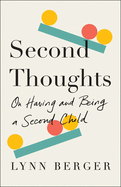
| Publisher: | Holt | |
| Genre: | Family & Relationships, Parenting, Biography & Autobiography, Personal Memoirs, Motherhood, Siblings | |
| ISBN: | 9781250787866 | |
| Pub Date: | April 2021 | |
| Price: | $25.99 |
| Parenting & Family |
by Lynn Berger
Lynn Berger began working on the illuminating Second Thoughts while pregnant with her second child. "What did it mean," she wondered, "to have a child for the second time? Why did we want a second child at all? Our first had been nothing less than a miracle, an event without precedent, but what did that make our second? A repetition? A perpetuation? A trip down memory lane?" Unable to answer these questions for herself without tripping into one assumption after another, Dutch journalist Berger went looking for writing about second children. In the overfull world of parenting books, however, she found very little that spoke to the transition from a family with one child to a family with two (or more) children--and so Second Thoughts was born.
What impact does birth order have on personality? Are children with siblings better off than only children? Are second children disadvantaged by never having their parents' full attention, or do they benefit because their parents have some sense of what they're doing by the second time around? Berger suggests that much of what we think we know about these (and other) topics is pure myth, and not borne out in scientific study. In addition to providing easy-to-understand summaries of complex research studies, she draws on her own experience as a mother of one (and then two) across the pages of Second Thoughts, which is peppered with touching anecdotes from her own family life. The result is a welcome invitation for self-reflection and contemplation about the complex emotions that surround every aspect of parenting, be it of one child or many. --Kerry McHugh, blogger at Entomology of a Bookworm
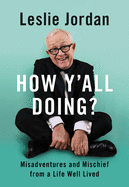
| Publisher: | Morrow | |
| Genre: | Family & Relationships, Biography & Autobiography, Celebrity & Popular Culture, Form, Personal Memoirs, Topic, Humor, Essays, LGBTQ+ | |
| ISBN: | 9780063076198 | |
| Pub Date: | April 2021 | |
| Price: | $26.99 |
| Humor |
by Leslie Jordan
One of the few bright spots to come out of the 2020 pandemic was Leslie Jordan's discovery of Instagram as a new venue for his warmly hilarious stories. How Y'all Doing? gives the diminutive Emmy-winning actor and comedian a chance to share more endearing, funny and uplifting tales from his life. Growing up flamboyantly gay in Chattanooga, Tenn., in the early 1960s wasn't easy. "I had fallen out of the womb into my mother's high heels," he writes. But being able to make others laugh earned him protection from bullies.
Although Jordan briefly touches on his earlier drug and alcohol addictions (and the 12-step program that saved him), most of these tales are upbeat, outrageous and very funny. "My mind is like a bad neighborhood," he writes. "Honey, you do not want to go up there alone." For his drag debut, he chose the name Miss Baby Wipes. All of his high school crushes were on straight guys. "And this went on for forty years," he writes. "FORTY YEARS. Kinda painful in retrospect." There's not a lot of Will & Grace stories (those were in his first book, My Trip Down the Pink Carpet) but there's plenty of show biz tales. He recalls his spontaneous cartwheel in the movie The Help; recording a gospel song with his idol Dolly Parton; playing Truman Capote in a Broadway-bound play; and how meeting Carrie Fisher won his mother a phone call from Debbie Reynolds.
Jordan is a national treasure and How Y'all Doing? is the feel-good read of the year. --Kevin Howell, independent reviewer and marketing consultant

| Publisher: | Abrams | |
| Genre: | Quilts & Quilting, Knitting, Needlepoint, Needlework, Crafts & Hobbies | |
| ISBN: | 9781419746260 | |
| Pub Date: | April 2021 | |
| Price: | $40 |
| Art & Photography |
by Kaffe Fassett
In this lush and stunning coffee-table book, artist, textile designer and author Kaffe Fassett (Kaffe Fassett's Bold Blooms and Dreaming in Color) takes readers on a rare, intimate tour of his London studio home
Kaffe Fassett in the Studio: Behind the Scenes with a Master Colorist is divided into three parts, and the vibrant patterns and colors leap out from almost every one of its 240 pages. Part one describes his studio and home life, including glimpses into his living space, creative team, daily life and routines, and the sources of his inspiration.
Part two features his creations and offers insights on the many artforms he works with, such as patchwork, knitting and painting. Fassett's versatility and skill are apparent throughout, and everything he does is imbued with the passion and joy that is his signature--from the textile designs that he is most famous for to mosaics, needlepoint and styling his own home. Finally, part three provides detailed project instructions, as well as quilting and needlepoint templates and basics.
Fassett's writing is as welcoming as the décor in his home. The undone artistry of quilts draped over well-loved furniture, vintage crockery, treasured bolts of fabric and volumes of cherished books all serve to elevate and inspire. As he writes, "Color is such a giant enigma, changing and revealing different possibilities each time one concentrates on it for more than a moment." Kaffe Fassett in the Studio, itself a tapestry of prints and hues, will likewise offer these different possibilities with each reading. --Grace Rajendran, freelance reviewer and literary events producer
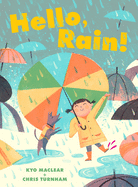
| Publisher: | Chronicle Books | |
| Genre: | Classics, General, Legends, Myths, Fables, Juvenile Fiction, Fairy Tales & Folklore | |
| ISBN: | 9781452138190 | |
| Pub Date: | April 2021 | |
| Price: | $16.99 |
| Starred | Children's & Young Adult |
by Kyo Maclear, illust. by Chris Turnham
In Hello, Rain!, Kyo Maclear (The Liszts; Bloom; Operatic) builds a delightful meditation on a theme by following a child and their dog through anticipating a storm to the sunlight at the end.
As the drops begin to fall, child and dog don their rain gear--matching yellow and orange raincoats--and venture out to explore. The companions launch makeshift watercrafts down a flooded street, examine sticky snails and seedlings, and "whisper-talk" under a tree until thunder and lightning send them inside to play in a cozy fort. (Because "naps and secrets are both better--when it rains.") As their soggy trip continues, the child finds optimism in each situation despite the fickle nature of the weather, resulting in a joyous romp dictated by the sky's unpredictability. The adults around them "dash, dart" and "skitter, skatter" to avoid getting wet while the pair revels in the weather: "Why hurry when the sky is an adventure?"
Maclear's poetic text cascades down each page in rivulets and short bursts, requiring the eye to jump around and follow the path of each phrase like a rain droplet. Illustrator Chris Turnham (The Wish Tree) carefully constructs each digitally rendered scene and plays with perspective: on some pages, readers look at the subject through a curtain of rain; on others, the viewpoint is from above as the child and dog walk through rows of lush garden or beneath the spiderwebbed branches of a tree. Maclear and Turnham use Hello, Rain! to magnify the magic and beauty revealed by rain and to remind readers to stop and take in the magic and brilliance all around. --Kieran Slattery, freelance reviewer, teacher, and co-creator, Gender Inclusive Classrooms
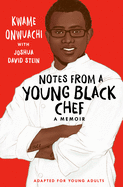
| Publisher: | Delacorte Press | |
| Genre: | Biography & Autobiography, Cooking & Food, Young Adult Nonfiction, Social Topics, Cultural, Ethnic & Regional, Prejudice & Racism | |
| ISBN: | 9780593176009 | |
| Pub Date: | April 2021 | |
| Price: | $17.99 |
| Children's & Young Adult |
by Kwame Onwuachi, Joshua David Stein
Kwame Onwuachi was only 26 when he opened his first restaurant. That this restaurant failed within three months is part of what makes his autobiography a valuable read for young adults. Notes from a Young Black Chef (Adapted for Young Adults) is an anti-racist, inspirational and true story that ends not with our YA protagonist getting everything he wanted, but with a real person experiencing loss and continuing to persevere.
The young adult adaptation of Notes reads as a straightforward autobiography in which the author baldly displays his truth: "I have grown up in the knock-about projects. In the Bronx, I've been the kid on the corner, but I have also spent time in Nigeria with my grandfather... where there were no projects, no blocks, no corners." Even in this quick history, though, Onwuachi clarifies, "Not everyone from the Bronx comes from the streets"--he lived on a "tree-lined and quiet" street and "grew up" in the projects through his friendships. His autobiography brings the reader what feels like an extremely authentic account of his life: an abusive father, drug dealing, life in Nigeria, working in kitchens, going to the Culinary Institute, appearing on Top Chef. This is not a "rags to riches" story--and Onwuachi wants readers to know that.
Joshua David Stein works with Onwuachi to build an open, honest and deeply interesting autobiography of someone who is still very young. "I'm standing on stories," Onwuachi says of the lives of his ancestors, "and this is my own." What better book to give a youth than one that shows the world as it is--institutionalized racism, beating the odds and all? --Siân Gaetano, children's and YA editor